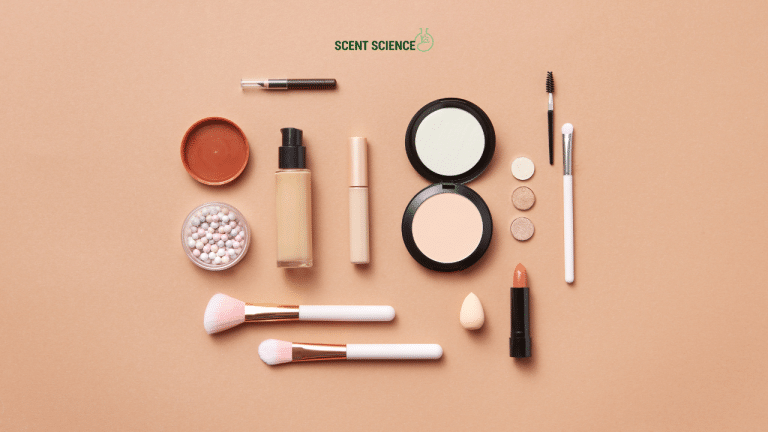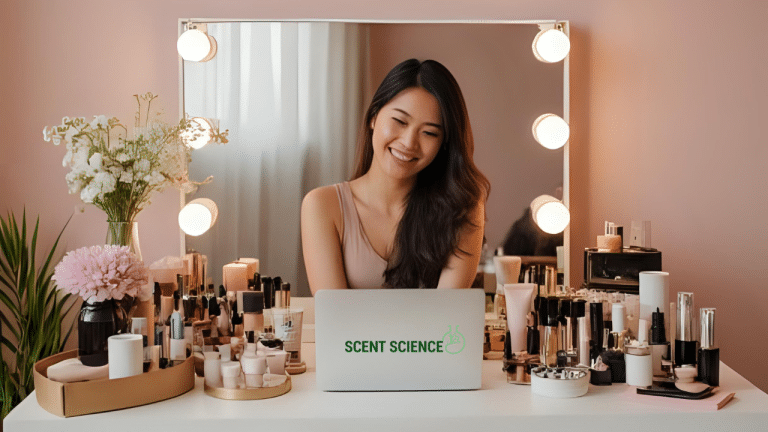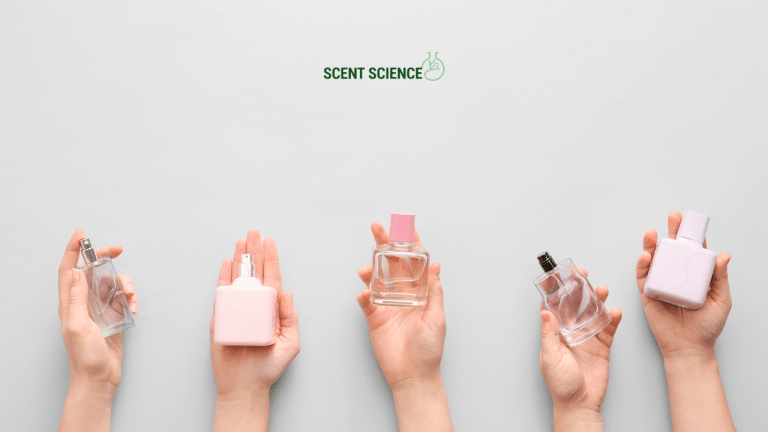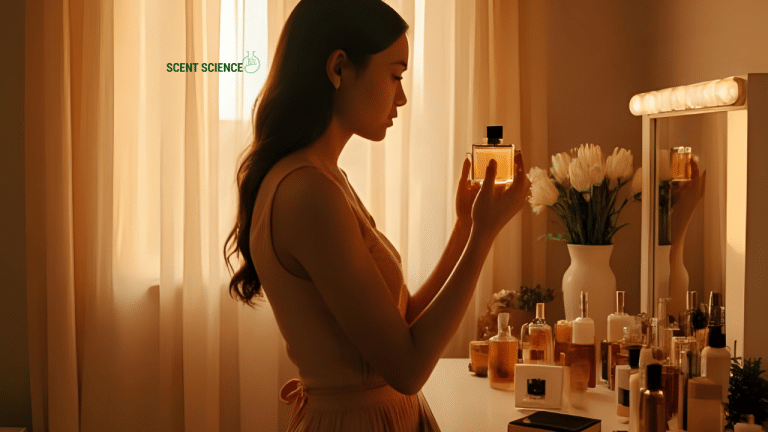Mood-based fragrance is more than a wellness trend—it’s becoming a powerful tool for emotional well-being. Have you ever noticed how certain scents can instantly change your mood, calm your nerves, or make you feel energized? That’s no coincidence, as the science behind fragrance manipulation is deeply rooted in our psychological responses to scent.
Today’s fragrance world is embracing emotional intelligence, combining scent science with AI to create personalized, mood-driven perfumes. These aren’t just pleasant aromas—they’re carefully designed experiences that influence how you feel. The integration of AI in perfume creation enables a seamless blend of technology and artistry, ensuring each scent is uniquely tailored to individual needs.
In this blog, you’ll learn:
- How scent and emotion are biologically connected
- What fragrance notes match specific moods
- How AI is making mood-based fragrance smarter
- How to build your own emotional scent wardrobe
Table of Contents
ToggleThe Science Behind Mood-Based Fragrance
Why Fragrances Affect Your Feelings
Mood-based fragrance works because the olfactory system (your sense of smell) connects directly to the brain’s limbic system—responsible for emotion and memory. When you inhale a scent, it triggers emotional and psychological responses in milliseconds. Through the use of bioengineered fragrance ingredients, the impact of these scents can be precisely tailored to enhance specific emotional outcomes.
The field of aromachology studies how fragrances influence behavior and mood. Research has shown:
- Lavender helps reduce anxiety
- Citrus improves energy and alertness
- Sandalwood promotes calm and focus
This scientific foundation is what powers the effectiveness of mood-based fragrance, further enhanced by AI fragrance technology that revolutionizes how these scents are crafted and personalized.
Your Emotional Scent Palette
How Fragrance Notes Map to Moods
To use mood-based fragrance effectively, it helps to understand what notes trigger specific feelings. Here’s a breakdown of common fragrance families:
- Citrus (lemon, grapefruit) → Energizing and uplifting
- Floral (lavender, chamomile) → Soothing and calming
- Woody (cedar, sandalwood) → Grounding and focusing
- Spicy (ginger, cardamom) → Empowering and motivating
Examples:
- Morning motivation? Go for grapefruit and bergamot
- Nighttime calm? Use chamomile and neroli
- Need to concentrate? Try vetiver and cedar

Pro Tip: Use layering techniques to blend notes that support multiple emotional needs. Understanding the role of AI in creating sustainable fragrances can also enhance how these scents interact with the environment and your mood.
How AI Makes Mood-Based Fragrance Smarter
Technology Meets Emotional Scent Design
Artificial intelligence is enhancing how we choose and interact with mood-based fragrance. Here’s how it works:
- AI fragrance algorithms analyze your preferences and emotional goals
- They recommend scent profiles proven to support those feelings
- Machine learning refines the process by learning from your feedback
Examples of Smart Tools:
- Apps like EveryHuman and ScentTrunk suggest daily mood-based fragrance picks
- Wearables track stress levels and trigger scent diffusion based on mood changes
With the growing importance of AI versus human perfumers in scent creation, these tools are becoming integral in building fragrance wardrobes that support mental and emotional health.
The Rise of Adaptive and Responsive Fragrances
Scent That Evolves With You
Mood-based fragrance is entering a new phase—adaptive technology. These innovations respond to your environment, body, or mood in real time:
- Time-release scent layers maintain emotional balance throughout the day
- Chemistry-responsive formulas change based on skin temperature and pH
- Smart diffusers adjust intensity based on ambient conditions
Example: Moodo’s AI-powered diffuser changes scent intensity based on time of day or energy level. Learn more about how AI is shaping these innovations through our AI fragrance design guide.
This smart tech is pushing mood-based fragrance beyond personal use and into environments. The future of mood-based fragrance is set to transform how we experience scents in every aspect of our lives.
Build Your Emotional Fragrance Wardrobe

A Personal Wellness Tool You Can Wear
Here’s how to get started with mood-based fragrance in your own life:
- Identify your main emotional goals: Energy, calm, confidence?
- Choose 3–5 core fragrances aligned with those moods
- Use scent strategically: Morning vs. evening, work vs. weekend
- Layer or switch as needed for emotional support
Scent Matching Example:
- Pre-work energy → Lime & basil
- Afternoon focus → Vetiver & sage
- Evening wind-down → Lavender & tonka bean
Mood-Based Fragrance in Your Environment
Scenting Spaces for Emotional Support
Mood-based fragrance isn’t just for skin—it’s also revolutionizing how we design environments:
- Smart home scent systems adjust based on time, weather, or activity
- Zoned scenting: Lavender in bedrooms, citrus in kitchens
- Commercial spaces: Hotels, offices, and spas use scent for guest mood enhancement
Use diffusers, scented candles, or AI-powered scent devices to build emotionally responsive environments. The integration of AI in fragrance development ensures these systems are more intuitive and effective than ever.
Conclusion
The future of fragrance is emotional, intelligent, and personalized. With the power of mood-based fragrance and AI, we can now tailor our scent experience to support how we want to feel. By understanding the dynamics of AI-driven personalization, we can curate scents that resonate with our daily emotional needs.
Whether you’re boosting energy, reducing stress, or creating a relaxing atmosphere, your fragrance can work harder—for your mood, your space, and your well-being.
Mood-based fragrance is not just a trend—it’s the future of emotionally intelligent self-care.
FAQs
Q: What is mood-based fragrance?
A: It’s a type of scent designed to support emotional goals like calm, focus, or energy.
Q: Can fragrance really change your mood?
A: Yes! Studies show scent influences brain activity linked to emotions and behavior.
Q: How does AI help personalize fragrance?
A: AI analyzes user data and emotional needs to suggest scent profiles that align with your mood.
Q: Is mood-based fragrance only for personal use?
A: No—it’s increasingly used in homes, offices, and hospitality to create mood-specific environments.
Q: How many fragrances do I need in my emotional wardrobe?
A: Start with 3–5 scents that match your key emotional states (e.g., energizing, calming, focusing).
Ready to experience the power of emotionally smart scent?
Visit ScentScienceBeauty.com for personalized mood-based fragrance tips and product reviews.

![[Mood-Based Fragrance] Is the Future: How Scents Are Getting Emotionally Smarter](https://scentsciencebeauty.com/wp-content/uploads/2025/05/10x-Blogs-2025-05-19T175442.577-1024x576.png)





